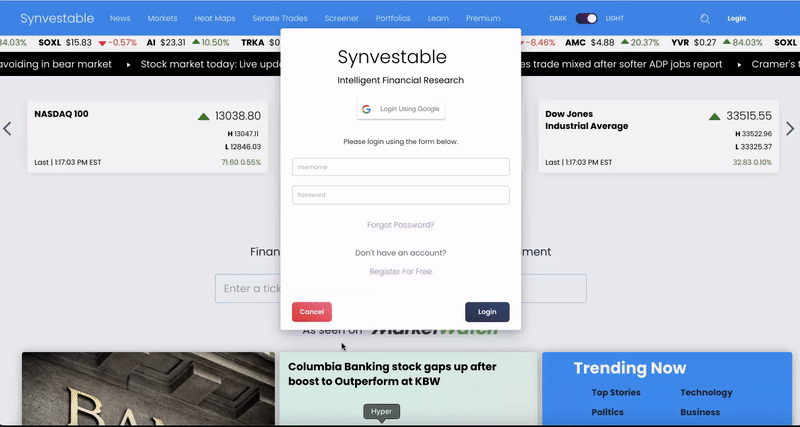Financial literacy is the ability to understand and effectively use various financial skills, including personal financial management, budgeting, and investing.
It involves being able to make informed decisions about financial matters and being able to understand and manage one's own financial situation. Achieving financial literacy can be a difficult process, but it is an important step towards financial stability and security.
Here are the 6 Main Skills Needed For Financial Literacy:
- Understand Your Personal Financial Scenario
- Create A Sustainable Financial Plan
- Understand How To Read Financial Statements
- Learn How To Pick Stocks
- Study The Style of Great Investors
- Learn Investing Best Practices

Understand Your Personal Financial Scenario
There are several key steps that can be taken to achieve financial literacy:
- Learn About Money: The first step towards achieving financial literacy is to educate yourself about personal finance and money management. This can be done through reading books, taking classes, or seeking out other resources such as financial planning websites or educational seminars.
- Set Financial Goals: It is important to have a clear understanding of your financial goals and what you want to achieve. This could include saving for retirement, paying off debt, or building up an emergency fund. Setting specific, measurable, attainable, relevant, and time-bound (SMART) goals can help to make your financial plan more concrete and easier to follow.
- Create A Budget: A budget is a tool that can help you to manage your money and reach your financial goals. It involves tracking your income and expenses and making adjustments as necessary to ensure that you are spending within your means. There are many resources available to help you create a budget, including budgeting apps and online tools.
- Save & Invest: Building up your savings and investing for the future is an important aspect of financial literacy. There are many different options available for saving and investing, including traditional savings accounts, certificates of deposit (CDs), and individual retirement accounts (IRAs). It is important to do your research and choose the options that are best suited to your needs and risk tolerance.
- Manage Debt: Debt can be a major roadblock to achieving financial literacy. It is important to understand the different types of debt and the terms associated with them, as well as to develop a plan for paying off debt. This may involve consolidating debt, negotiating lower interest rates, or developing a budget that allows for debt repayment.
- Protect Your Assets: Financial literacy also involves protecting your assets and planning for the unexpected. This could involve purchasing insurance, creating an estate plan, or setting up a power of attorney.
Create A Sustainable Financial Plan
Creating a financial budget is an important step towards achieving financial stability and security. A budget is a tool that can help you to manage your money and reach your financial goals. Here are some steps you can take to create a financial budget:
- Determine Your Total Income: The first step in creating a budget is to determine your total income, including any salary, wages, or other sources of income. It is important to be as accurate as possible when determining your income, as this will form the foundation of your budget.
- Identify Your Expenses: Next, you will need to identify your expenses. This may include fixed expenses, such as rent or mortgage payments, as well as variable expenses, such as groceries or entertainment. Be sure to include all of your expenses, even small ones, in order to get an accurate picture of your spending.
- Determine Your Net Income: Once you have identified your income and expenses, you can determine your net income by subtracting your expenses from your income. Your net income is the amount of money that you have left over after paying your expenses.
- Create A Monthly Budget: Based on your net income and financial goals, you can create a budget plan that outlines how you will allocate your money. This may involve setting aside a certain amount of money for savings, paying off debt, or covering your expenses.
- Monitor & Adjust: It is important to monitor your budget regularly and make adjustments as necessary. This may involve reviewing your expenses and finding ways to cut back, or adjusting your financial goals as your circumstances change.
By following these steps, you can create a financial budget that will help you to manage your money and reach your financial goals.
Understand How To Read Financial Statements
Reading financial statements is an important aspect of financial literacy. Financial statements are documents that provide information about a company's financial performance, including its income, expenses, assets, and liabilities. There are several types of financial statements that are commonly used, including the balance sheet, income statement, and statement of cash flows.
Here are some tips for reading financial statements:
- The Purpose of Financial Statements: It is important to understand the purpose of the financial statement you are reading. This will help you to know what to look for and how to interpret the information.
- Understand Key Financial Terms: Financial statements use a specific set of terms and jargon that may be unfamiliar to those who are not familiar with finance. It is important to understand these terms in order to accurately interpret the financial statement.
- See The Bigger Picture: Financial statements provide a snapshot of a company's financial performance over a specific period of time. It is important to look at the overall trends and patterns rather than focusing on individual numbers.
- Compare To Previous Periods: Comparing financial statements from different periods can provide valuable insights into a company's financial performance. This may involve comparing the current year's financial statement to the previous year's statement or comparing the current quarter to the same quarter in the previous year.
- Use Financial Ratios: Financial ratios are mathematical calculations that provide additional insights into a company's financial performance. There are many different financial ratios that can be used, such as the price-to-earnings ratio (P/E ratio) or the debt-to-equity ratio.
By understanding the purpose of financial statements, knowing the key terms, looking at the big picture, comparing to previous periods, and using financial ratios, you can gain a better understanding of a company's financial performance.

Learn How To Pick Stocks
Investing in stocks can be a good way to grow your wealth over time, but it is important to understand the risks involved and to do your research before making any investment decisions. Here are some steps you can take to invest in stocks:
- Determine Your Investment Goals: It is important to have a clear understanding of your investment goals before you begin investing in stocks. This may include considerations such as your time horizon (how long you plan to hold the investment), your risk tolerance (how much risk you are comfortable with), and your financial situation.
- Establish Investing Discipline: Investing in stocks requires a certain level of knowledge and understanding of the financial markets. You can learn exactly what to look for by subscribing to our newsletter and checking out our Blueprint Investing Formula which has been beating the market consistently for the last 5 years!
- Open A Brokerage Account: In order to invest in stocks, you will need to open a brokerage account. A brokerage account is a type of account that allows you to buy and sell securities, such as stocks, bonds, and mutual funds. There are many different brokerage firms to choose from, so it is important to do your research and find one that meets your needs.
- Model Different Portfolios: There are many different factors to consider when choosing stocks to invest in. Some things to consider include the company's financial performance, its management team, and the industry in which it operates. It is also important to diversify your portfolio, which means investing in a variety of different stocks rather than putting all of your money into one stock.
- Set Price Targets: Once you have invested in stocks, it is important to monitor your investments regularly. This may involve tracking the performance of your stocks, reviewing your portfolio to ensure that it is still in line with your investment goals, and making changes as necessary.
Subscribe For FREE Stock Insights!
And a chance to win free shares of stock.
It is important to keep in mind that investing in stocks carries risks and there is no guarantee of a profit. It is always a good idea to consult with a financial professional before making any investment decisions.
Study The Style of Great Investors
There are many successful investors who have made a significant impact on the financial world and whose strategies and philosophies can be studied and learned from. Here are a few notable investors who are often cited as some of the best to study:

Warren Buffet - Warren Buffet is a well-known investor and the CEO of Berkshire Hathaway. He is known for his value investing philosophy, which involves buying undervalued stocks and holding them for the long-term.

Peter Lynch - Peter Lynch is a former mutual fund manager who is known for his strong track record of outperforming the market. He is the author of several books on investing, including "One Up on Wall Street," which is considered a classic in the field.

Benjamin Graham - Benjamin Graham is often referred to as the "father of value investing" and is known for his influential book, "The Intelligent Investor." Graham's approach to investing involves finding undervalued stocks and buying them at a discount.

Ray Dalio - Ray Dalio is the founder of Bridgewater Associates, a successful investment firm. He is known for his "all-weather" investment strategy, which involves diversifying investments to mitigate risk.

David Swensen - David Swensen is the chief investment officer at Yale University and is known for his innovative investment strategies, including his use of alternative investments such as real estate and private equity.
These are just a few examples of successful investors who have made a significant impact in the financial world. There are many other investors whose strategies and philosophies can also be studied and learned from.
Don't Let Years of Lost Compounding Cost You
Get the the special research that still beats the market.

Register For Free in Seconds! Click The Image
The absolute best app in finance. Register in 3 seconds using your Google Account!

Subscribe For FREE Stock Insights!
And a chance to win free shares of stock.
DISCLOSURE: Synvestable is a financial media provider only and is providing the above data for research purposes only. Please consult your financial advisor before investing as investing carries the risk for potential loss of capital. For more information, please consult our Terms of Use on www.synvestable.com





